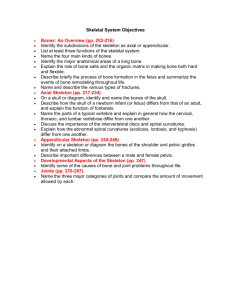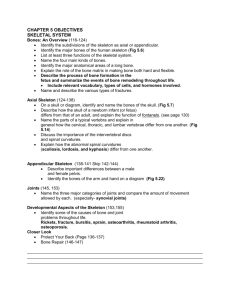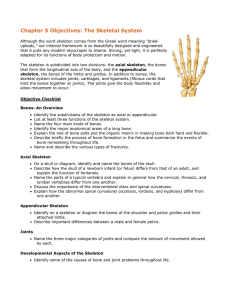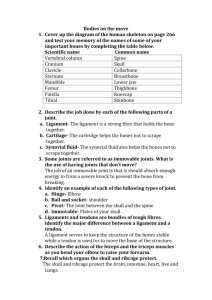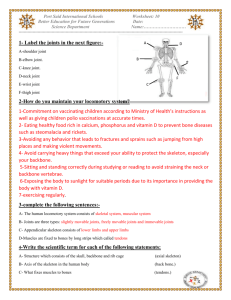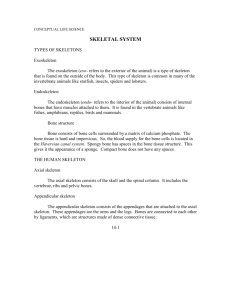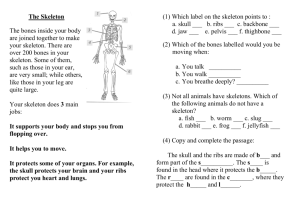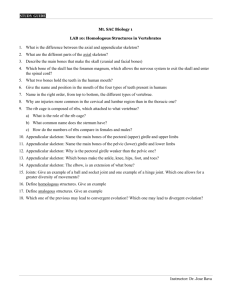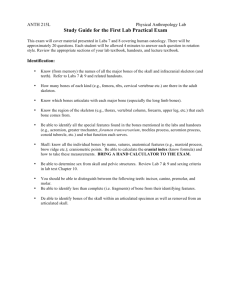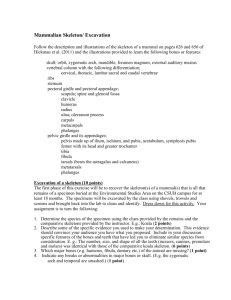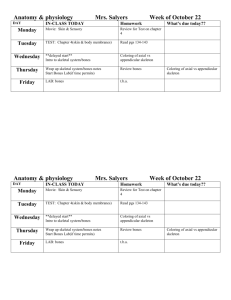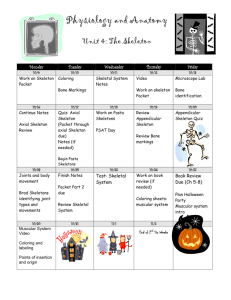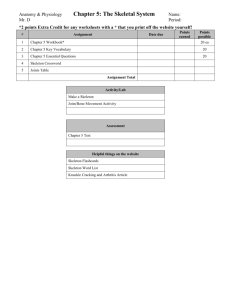Ch 5: Skeletal System Study Guide
advertisement
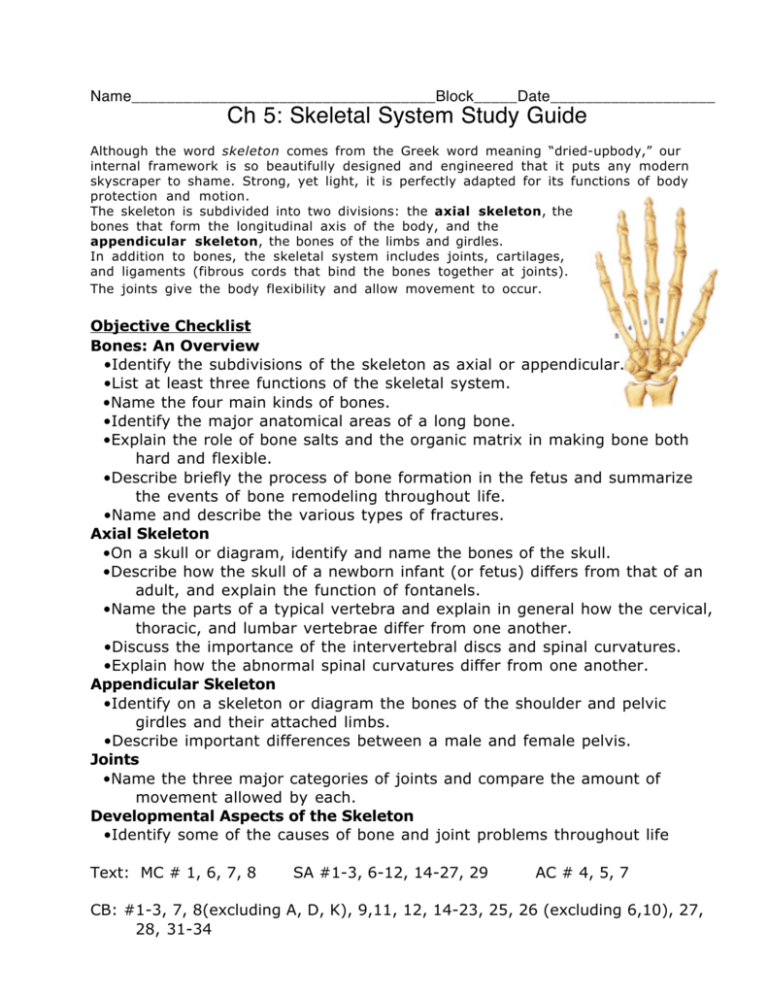
Name___________________________________Block_____Date___________________ Ch 5: Skeletal System Study Guide Although the word skeleton comes from the Greek word meaning “dried-upbody,” our internal framework is so beautifully designed and engineered that it puts any modern skyscraper to shame. Strong, yet light, it is perfectly adapted for its functions of body protection and motion. The skeleton is subdivided into two divisions: the axial skeleton, the bones that form the longitudinal axis of the body, and the appendicular skeleton, the bones of the limbs and girdles. In addition to bones, the skeletal system includes joints, cartilages, and ligaments (fibrous cords that bind the bones together at joints). The joints give the body flexibility and allow movement to occur. Objective Checklist Bones: An Overview •Identify the subdivisions of the skeleton as axial or appendicular. •List at least three functions of the skeletal system. •Name the four main kinds of bones. •Identify the major anatomical areas of a long bone. •Explain the role of bone salts and the organic matrix in making bone both hard and flexible. •Describe briefly the process of bone formation in the fetus and summarize the events of bone remodeling throughout life. •Name and describe the various types of fractures. Axial Skeleton •On a skull or diagram, identify and name the bones of the skull. •Describe how the skull of a newborn infant (or fetus) differs from that of an adult, and explain the function of fontanels. •Name the parts of a typical vertebra and explain in general how the cervical, thoracic, and lumbar vertebrae differ from one another. •Discuss the importance of the intervertebral discs and spinal curvatures. •Explain how the abnormal spinal curvatures differ from one another. Appendicular Skeleton •Identify on a skeleton or diagram the bones of the shoulder and pelvic girdles and their attached limbs. •Describe important differences between a male and female pelvis. Joints •Name the three major categories of joints and compare the amount of movement allowed by each. Developmental Aspects of the Skeleton •Identify some of the causes of bone and joint problems throughout life Text: MC # 1, 6, 7, 8 SA #1-3, 6-12, 14-27, 29 AC # 4, 5, 7 CB: #1-3, 7, 8(excluding A, D, K), 9,11, 12, 14-23, 25, 26 (excluding 6,10), 27, 28, 31-34

